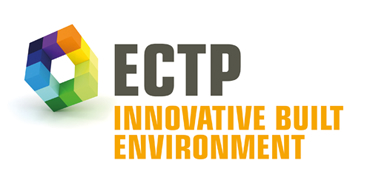
SEEDS
Self learning Energy Efficient builDings and open Spaces
Start date: 01.09.2011
Duration: 42 months
Coordinator: CEMOSA
Budget: 4.08 M€
Details
SEEDS is an FP7 project in the field of ICT technologies for Energy efficient Buildings. It started in September 2011 and ended in February 2015. It focuses on the development of a Building Energy Management System (BEMS) to optimize buildings’ performance in terms of energy, comfort and life cycle costa. It can be applied to single buildings or group of buildings and surrounding open spaces.
SEEDS performs detailed modelling of the HVAC equipment which is by far the largest energy consumer in buildings. The modelling of the energy equipment in the building is based on IFC – an Open BIM data exchange format.
SEEDS implements an innovative model predictive control strategy based on sensor measurements and self-learning techniques. This methodology allows taking into account the properties of a building and its energy behaviour without the need of having explicitly the architecture model (usually in BIM) of the building. If available, SEEDS uses BIM data about the building floor plan/layout and the building services structure. If BIM format is not available, then a tailored SEEDS’ methodology is used for gathering the information about the spaces, energy equipment, supplies and storages and user conditions. This methodology is based on a MS Access schema and allows designing a BEMS for a building starting using only the information available on the building facilities and the appropriate set of measurements that are captured by wireless sensor nodes. This Access database represent an own ontology of a building information model (BIM). Its structure is based on Industry Foundation Classes with enhancements to cope with SEEDS requirements. The SEEDS architecture includes access to several self-learning methods, such as neural networks, decision tree learners and Bayesian networks that can be used to learn models for predicting variables such as temperature, air quality as well as presence in rooms. These predictive models are used by a Particle Swarm Optimisation algorithm that has been specifically tailored for optimising settings to minimise energy consumption whilst maintain comfort, leading to an energy efficient control strategy. Thus, unlike previous approaches, there is no need to have detailed architecture information (such as material parameters, thermal capacities etc.) and hence, SEEDS can be easily applied to the energy-aware upgrading/optimization of existing building services systems and to the retrofitting of old buildings which may lack constructional specification details necessary for traditional systems. Moreover, the use of wireless technologies, coupled with a capability for self-learning and optimisation provides a BEM model that evolves with time.
SEEDS allows improving the energy behaviour of buildings reducing the energy costs and the CO2 emissions while taking care of comfort & health conditions (indoor temperature, humidity, air quality and lighting level). On the other hand, the commissioning and maintenance of HVAC and lighting systems is simplified with respect to traditional ones and so is the cost. Moreover, one of the paramount characteristics of SEEDS is its ease with which it can be applied to any building which will facilitate market penetration of customized ICT solutions for building operation.
SEEDS includes two validation pilots in two different climatic areas and of different uses: an office building in Madrid (Spain) and a building into University of Stavanger Campus in Stavanger (Norway). According to recent surveys1, offices buildings and educational buildings 40% of non-residential building stock in Europe.
List of achievements
Reporting, results and news about the project available on CORDIS.
Contact
Contact person: Dr. Noemi Jiménez Redondo
Address: CEMOSA
Tel: +34 952.230.842
email: noemi.jimenez@cemosa.es
Documents
SEEDS Executive Summary
D2.2 SEEDS modeling ontology
D3.5 Positioning system and physical network design framework
D5.5 Implementation and refinement of self-learning algorithms and global optimization in the two pilots
D10.4 Project periodic report
SEEDS Final Report
Status
Finished












